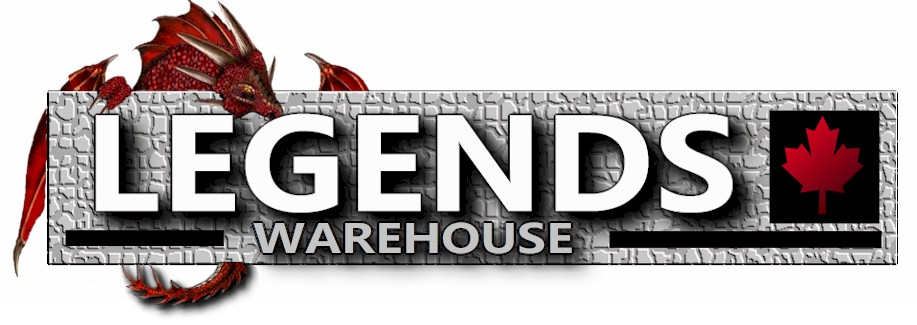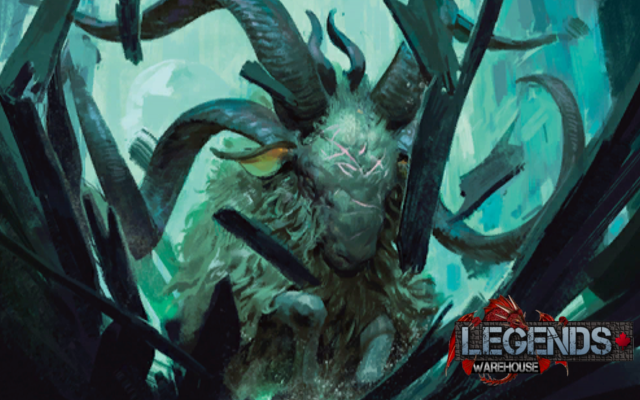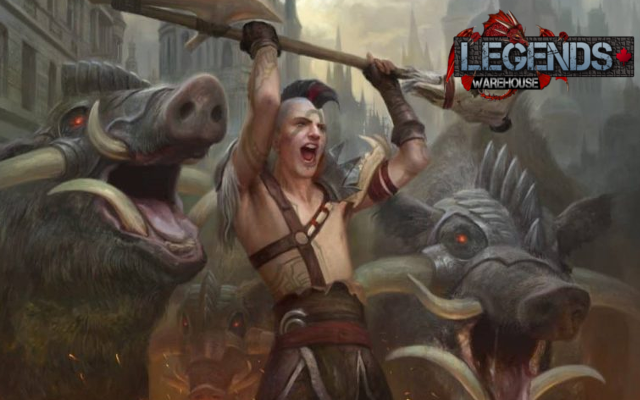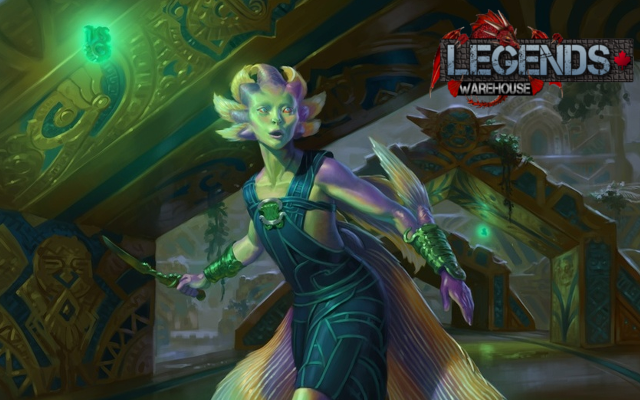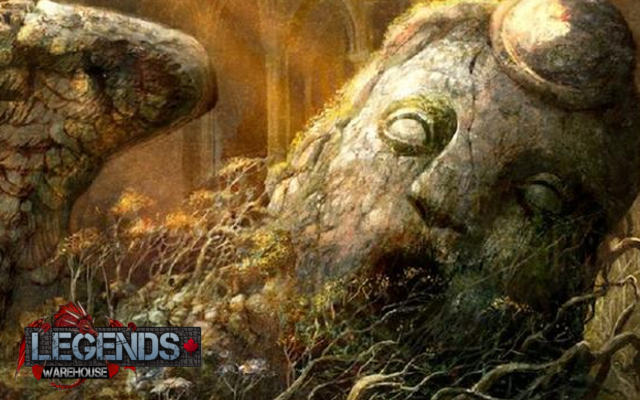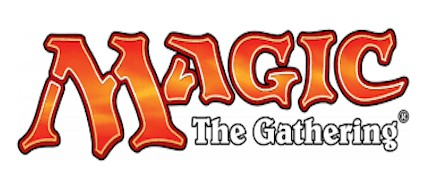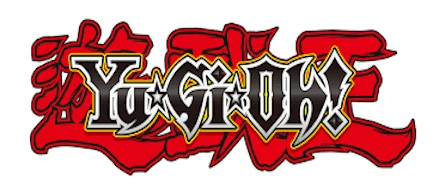Pledging Your Prerelease Allegiance
- Legends Warehouse News
- 17 Jan, 2019
Prereleases can be a bit daunting if you aren’t prepared. Every set brings new mechanics, new interactions, and endless ways of building your sealed pool and, by extension, endless ways you can get lost in the possibilities. Fortunately, like Guilds of Ravnica, Ravnica Allegiance prerelease kits are guild-focused to streamline the deck building decision. You simply select the guild you want, and the seeded booster pack helps steer your deck toward that colour combination. However, certain guilds tend to do better in different Limited environments, and Ravnica Allegiance is no different. With the full spoiler released, I’ve scoured the list for each guild and weighed their general power level. Unlike Guilds of Ravnica, there is no clear favourite for top tier as each guild has their own strengths and weaknesses, but certain guilds can edge out the competition just enough that I’ve been able to compile what I predict to be the best guilds for the prerelease.
At the top of the list we have Gruul for one specific reason: riot. Riot is everything a Gruul mage could want and more, giving you the option to either make your  creatures larger or able to swing in right away. This allows you to play defensively with bigger bodies when you’re behind, or offensively when you have the board advantage and want to pressure your opponent even further. What’s most impressive about riot as a mechanic is that you make the decision after it resolves since it says “This creatures enters with your choice of”. This becomes a nightmare for your opponents since they have to figure out which mode you’re going to pick and then react accordingly. The subtle little psych out potential notwithstanding, another of Gruul’s biggest strengths is the sheer size of a lot of its bombs, especially at uncommon. Sunder Shaman is a 5/5 for four mana with two positive abilities at uncommon. A couple years ago a creature like that would be a rare or mythic (I’m looking at you, Polukranos, World Eater!). Furthermore, Rhythm of the Wild is another uncommon that not only makes your creatures uncounterable, thus removing some decks’ ability to even interact with your threats, but also gives your nontoken creatures riot. Riot also stacks in multiple instances, so if you have two Rhythm in play, or just one and a creature that already has riot, you get to make double the choices!
creatures larger or able to swing in right away. This allows you to play defensively with bigger bodies when you’re behind, or offensively when you have the board advantage and want to pressure your opponent even further. What’s most impressive about riot as a mechanic is that you make the decision after it resolves since it says “This creatures enters with your choice of”. This becomes a nightmare for your opponents since they have to figure out which mode you’re going to pick and then react accordingly. The subtle little psych out potential notwithstanding, another of Gruul’s biggest strengths is the sheer size of a lot of its bombs, especially at uncommon. Sunder Shaman is a 5/5 for four mana with two positive abilities at uncommon. A couple years ago a creature like that would be a rare or mythic (I’m looking at you, Polukranos, World Eater!). Furthermore, Rhythm of the Wild is another uncommon that not only makes your creatures uncounterable, thus removing some decks’ ability to even interact with your threats, but also gives your nontoken creatures riot. Riot also stacks in multiple instances, so if you have two Rhythm in play, or just one and a creature that already has riot, you get to make double the choices!
The biggest issue Gruul has in sealed is that since most of its tricks are tied into its creatures, enough removal can shift the momentum to the opponent’s favour against a more interactive deck. As well, the Gruul cards in the set aren’t exactly big on card advantage. Outside of a few specific rares/mythics, you aren’t getting much in the ways of repeatable effects, and most of your instants are combat tricks, so you won’t have a ton of ways to interacting with an opposing board state. That being said, if you want to hit hard, hit early, and hit often, Gruul is probably the guild for you.
The other guild that impressed me quite a bit was Simic. This was a very close race with Gruul, and for a good reason. Like Gruul, Simic’s Green side gives you some seriously hefty bodies that can dominate a lot of boards. However, unlike  Gruul, you have to put a little more effort into achieving that size. The majority of Simic’s guild-specific creatures feature the adapt mechanic, meaning they start off smaller but can get bigger for a cost. These creatures typically fall along playable cost-to-power/toughness ratios, such as a 4/4 for four mana, 2/3 for three mana, etc, but can adapt later to get massive. What makes Simic stand out in sealed compared to the other guilds is how their creatures are good in both the early game and as a late game topdeck. Even the smallest adapt creature is usually a solid enough body once it’s adapted, so you have outs even if you’ve started to flood out on lands, unlike the smaller Gruul creatures whose growth is much more contained. Couple that with some impressive combat tricks like Applied Biomancy, and even a re-imagined Mystic Snake in Frilled Mystic and you can keep your opponents guessing. You can keep mana up on your opponent’s turn and force them into an “Are they going to adapt on my turn or do they have a trick?” conundrum that is brutal to play against.
Gruul, you have to put a little more effort into achieving that size. The majority of Simic’s guild-specific creatures feature the adapt mechanic, meaning they start off smaller but can get bigger for a cost. These creatures typically fall along playable cost-to-power/toughness ratios, such as a 4/4 for four mana, 2/3 for three mana, etc, but can adapt later to get massive. What makes Simic stand out in sealed compared to the other guilds is how their creatures are good in both the early game and as a late game topdeck. Even the smallest adapt creature is usually a solid enough body once it’s adapted, so you have outs even if you’ve started to flood out on lands, unlike the smaller Gruul creatures whose growth is much more contained. Couple that with some impressive combat tricks like Applied Biomancy, and even a re-imagined Mystic Snake in Frilled Mystic and you can keep your opponents guessing. You can keep mana up on your opponent’s turn and force them into an “Are they going to adapt on my turn or do they have a trick?” conundrum that is brutal to play against.
Simic’s biggest weakness is that most of the adapt costs are more than what you have to spend to cast the creature to begin with, so if you find yourself short on mana your deck is basically full of vanilla creatures. While it does have access to a couple different mana dorks to help alleviate this, being rares and uncommons hurts the odds of getting a critical mass of them, so you usually have to rely on hitting your land drops. As well. a lot of your best effects trigger off of putting +1/+1 counters on your creatures, so you need several ways to achieve that. While you can manually do that with adapt, if you find yourself unable to adapt you need to have a bunch of cards that can put counters on your creatures, and if you don’t have those, then you’re in trouble. The parasitic nature of Simic’s creatures with +1/+1 counters can be both a blessing and a curse, but the sheer power that adapt brings makes them my second choice.
I absolutely love the thought process behind Orzhov’s afterlife mechanic. “What if everything in your deck was a Doomed Traveler?” This is a mechanic that absolutely screams value, especially in Limited. One of the most important ways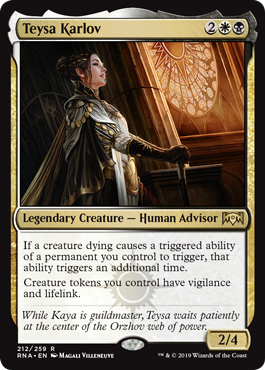 of navigating board states is knowing how to trade creatures and afterlife makes those equations much easier on your end. Knowing that your creatures will net you even more creatures can make combat math a nightmare for your opponents, and since Orzhov gets some of the best removal, such as Mortify and Final Payment, you can ruin their calculations even more. Orzhov is also one of the better decks to race aggro since so many of their effects can drain life. This allows you to keep up your own momentum while buying time against faster decks, or even just putting additional pressure and slower starts. Orzhov also has access to multiple cheap deathtouch creatures which allow you to trade with larger threats out of Gruul and Simic, so even if you don’t draw your removal spells, you can wall off the ground with deathtouchers and continually poke them in the air with spirit tokens.
of navigating board states is knowing how to trade creatures and afterlife makes those equations much easier on your end. Knowing that your creatures will net you even more creatures can make combat math a nightmare for your opponents, and since Orzhov gets some of the best removal, such as Mortify and Final Payment, you can ruin their calculations even more. Orzhov is also one of the better decks to race aggro since so many of their effects can drain life. This allows you to keep up your own momentum while buying time against faster decks, or even just putting additional pressure and slower starts. Orzhov also has access to multiple cheap deathtouch creatures which allow you to trade with larger threats out of Gruul and Simic, so even if you don’t draw your removal spells, you can wall off the ground with deathtouchers and continually poke them in the air with spirit tokens.
Where Orzhov decks tend to fall behind is against larger, evasive bodies that can overwhelm your defenses. Deathtouch helps trade with tramplers, but anything large with first strike or flying is going to need a removal spell. Another issue Orzhov runs into is that most of their resiliency comes from synergy with sacrifice effects and tokens. They usually don’t have many standalone bombs, and the ones they do have get overshadowed by some of the other guilds, so if your deck isn’t drawing the synergistic pieces or it starts to stumble then you’ll have a harder time recovering. Finally, while Orzhov has fantastic on-board card advantage, the lack of any kind of card draw means you’re often stuck in topdeck mode if you’re looking for answers, which means you can run out of steam fairly easily if you’re not prepared. Overall Orzhov is a wonderfully synergistic archetype with plenty of resiliency in combat, but lacks the means to recover when you get overwhelmed.
The slower nature of sealed can turn a lot of games into a midrange slog, but not so much when you choose Rakdos as your guild. This hyper-aggressive guild has one of my favourite mechanics in the set in spectacle. Spectacle cards can be cast for an alternate casting cost so long as the opponent has lost life that turn, be it through combat or a card effect. What makes spectacle so good is that what the spectacle cost does entirely hinges on the spell. More often than not it’s a simple cost reduction. Other times it forces your opponent to discard a card even allows you to pitch your hand and draw three new cards. There’s a variety of effects that give you long-term card advantage, and even something as simple as casting larger creatures for cheap can go a long way to putting away a game. Rakdos also has access to several ways of trigger spectacle without attacking, so on a stalled out board you can still push through damage with Skewer the Critics or Carnival // Carnage. Furthermore, the Rakdos card pool has a surprising amount of card draw and filtering. Between Blade Juggler, Light Up the Stage, and Theater of Horrors you can dig through your deck pretty quickly so you can keep pressuring your opponent.
one of my favourite mechanics in the set in spectacle. Spectacle cards can be cast for an alternate casting cost so long as the opponent has lost life that turn, be it through combat or a card effect. What makes spectacle so good is that what the spectacle cost does entirely hinges on the spell. More often than not it’s a simple cost reduction. Other times it forces your opponent to discard a card even allows you to pitch your hand and draw three new cards. There’s a variety of effects that give you long-term card advantage, and even something as simple as casting larger creatures for cheap can go a long way to putting away a game. Rakdos also has access to several ways of trigger spectacle without attacking, so on a stalled out board you can still push through damage with Skewer the Critics or Carnival // Carnage. Furthermore, the Rakdos card pool has a surprising amount of card draw and filtering. Between Blade Juggler, Light Up the Stage, and Theater of Horrors you can dig through your deck pretty quickly so you can keep pressuring your opponent.
While Rakdos excels at maintaining pressure once it gets the ball rolling, if it can’t get that early momentum it falls behind fairly quick. A typical Rakdos deck wants to hit early and fire off a bunch of cheap spectacle cards to steamroll an opponent, and if it’s unable to manage that then you’re left with a bunch of awkwardly-sized bodies trying to play catch-up. Furthermore, Rakdos isn’t exactly defensively-inclined since most of its creatures favour power over toughness, so if that momentum shifts away from you and you find yourself playing from behind, it can be incredibly difficult to get yourself out of that hole. As well, more defensive decks can wall off most Rakdos creatures if their toughness is high enough, thus making it even harder to trigger spectacle without a burn spell. Azorius does a great job of this since a lot of their fliers have 3-5 toughness, which can easily buy the enough time to build up a comparable board state, which is the bane of the Limited Rakdos deck’s existence. As a whole, Rakdos is hands down the scariest aggro deck in Limited, but if it stumbles and falls behind then it has the most trouble getting back into the beatdown position,
Last but not least, we have the Azorius. Where Azorius shines is in the classic UW Fliers archetype, which they seem to have embraced in Ravnica Allegiance. There are plenty of fliers in this set and the majority of them are Blue and White, including two anthem effects in Windstorm Drake and Spirit of the Spires. Evasion is usually all it takes to break board states, and with Azorius you get that in spades. Azorius also gives you access to a lot of tempo spells like bounce and lockdown effects which can often waste an opponent’s entire turn. This lets Azorius decks steal games from slower Gruul and Simic opponents that they  otherwise would have little chance of beating. However, because the evasive creatures tend to be smaller, if Azorius decks get pressured it can be difficult to pull the momentum back in their favour.
otherwise would have little chance of beating. However, because the evasive creatures tend to be smaller, if Azorius decks get pressured it can be difficult to pull the momentum back in their favour.
That being said, I ranked this one so low on the strength of its core mechanic in Limited. Addendum gives you a bonus when you cast the addendum spell during your main phase. Typically this means either a combat trick or some card draw, but combat tricks are at their best in Limited when they can catch an opponent off guard. It’s the difference in power between Titanic Growth and Monstrous Growth. When your opponent can see what your trick is and act accordingly, it takes a fair amount of impact out of the trick, and tacking on a scry or draw at the expense of the surprise factor hurts a lot of the potential for these spells in my mind. The thing is, most of the addendum spells are effects you would be playing normally in a Limited deck, but the addendum mechanic is just so awkward in sealed that it feels like wasted potential. There are a couple rares in the set where the addendum bonus is 100% worth it, but as a whole this feels like it will see much more play in Constructed.
One thing also worth noting is how uncommon it is to open a dedicated two-colour sealed pool at a prerelease. More often than not, you’re going to find yourself short on playables and you have to splash a third colour. Fortunately, each of the guilds can synergize with two other guilds to help bolster your sealed pool should you need the extra cards. For example, Simic meshes extremely well with Gruul’s riot mechanic due to the +1/+1 counter synergies, and even works well with Azorius as it has a couple ways of putting those counters onto the Azorius’s smaller evasive creatures, thus turning them into actual threats. Rakdos can take advantage of Gruul’s aggressive bodies while providing some much needed card advantage or use Orzhov’s afterlife tokens to chip in damage to trigger spectacle. Even Azorius and Orzhov make an excellent pair given the combination of afterlife tokens and UW fliers. This way, no matter which guild you choose you’ll have options in case your pool doesn’t quite live up to expectations.
Ravnica Allegiance offers an incredibly diverse Limited experience that’s perfect for players new and old. Every guild has strengths and weaknesses with no guild being a clear, undefeatable juggernaut. While certain guilds have their own natural advantages given the nature of sealed, they have drawbacks that reign them in enough to keep things balanced, and that doesn’t happen often in prerelease formats with seeded packs. Of course, with every prerelease the most important thing is to have fun, and the power balance of Ravnica Allegiance is such that you’ll be able to enjoy your event no matter which guild you pick.
